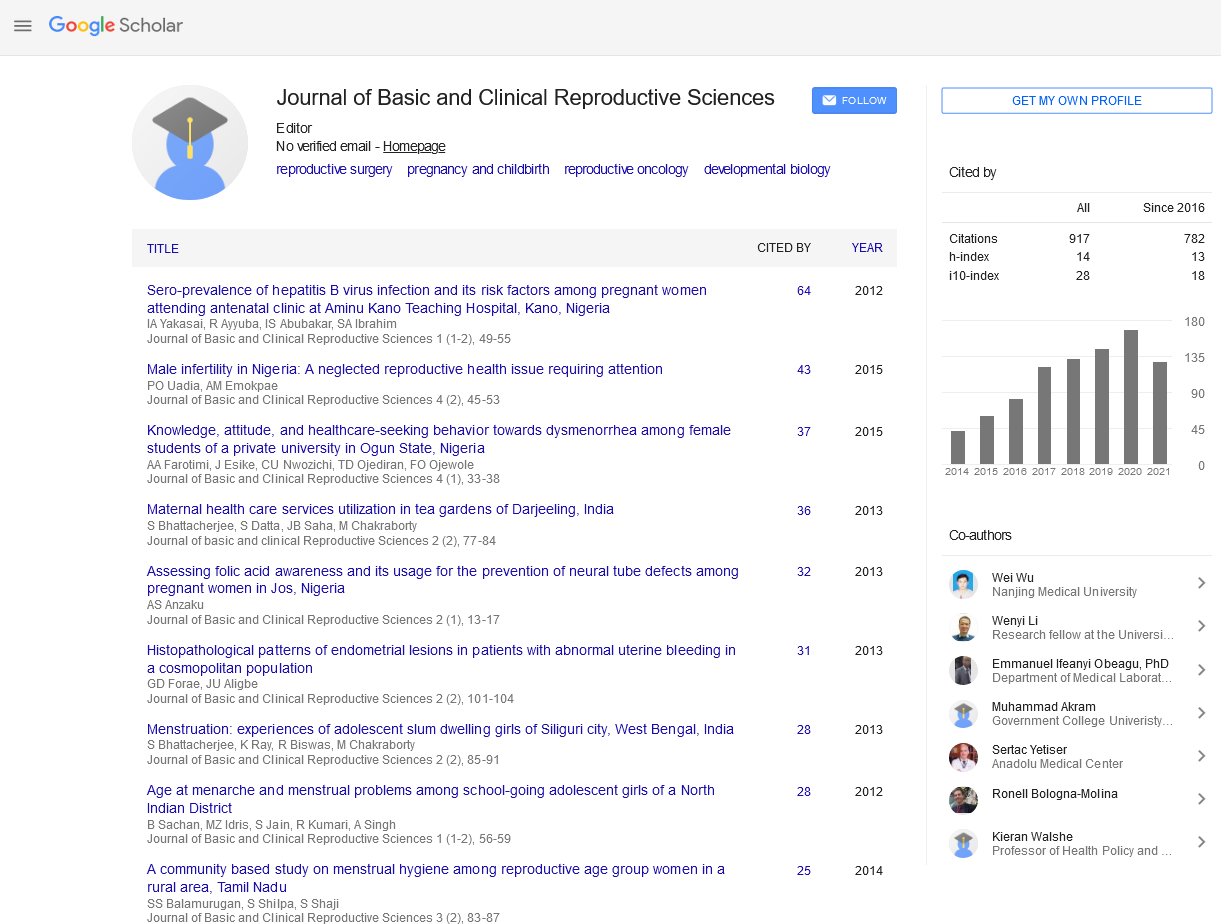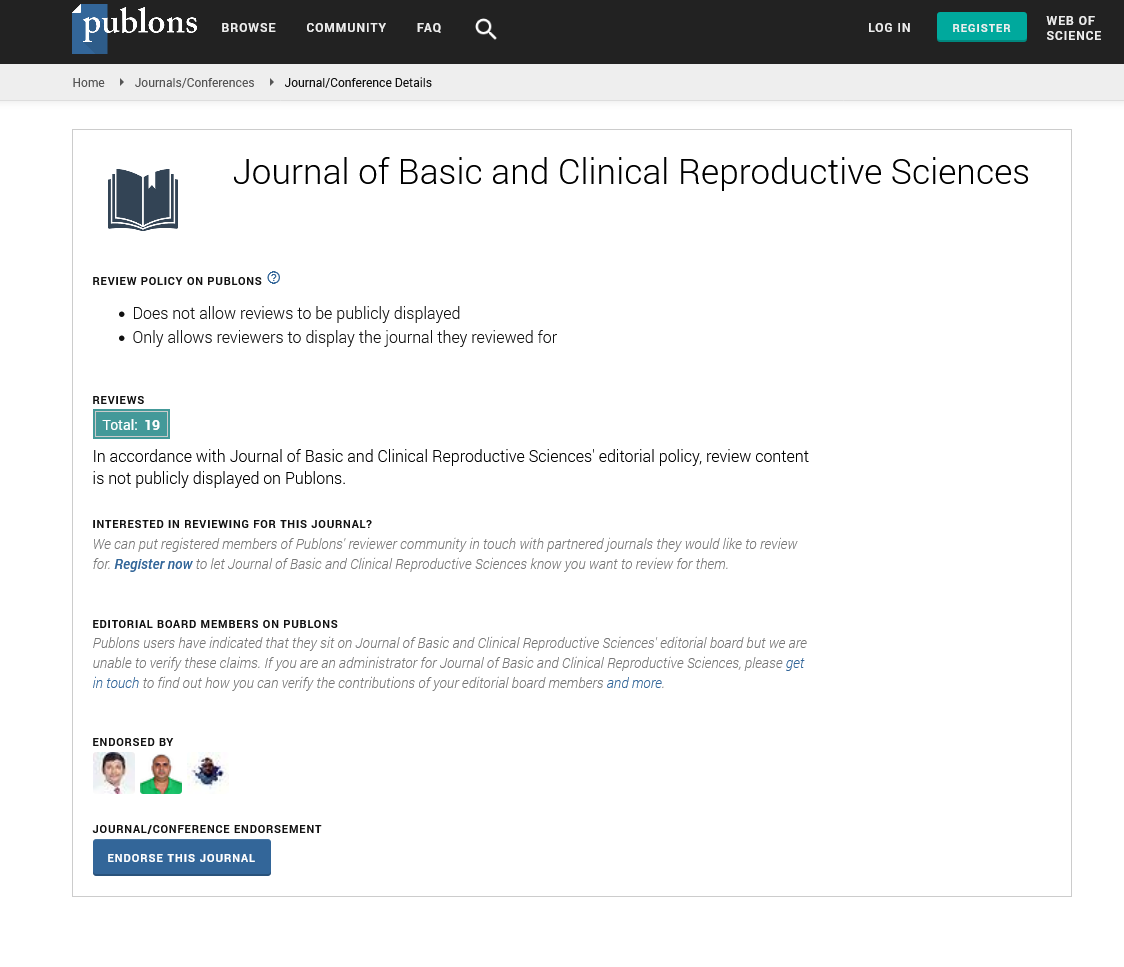Perspective - Journal of Basic and Clinical Reproductive Sciences (2023) Volume 12, Issue 3
Hydrocele in Males: Preventive Measures and Precautions
Received: 24-May-2023, Manuscript No. JBCRS-23-102467; Editor assigned: 26-May-2023, Pre QC No. JBCRS-23-102467 (PQ); Reviewed: 09-Jun-2023 QC No. JBCRS-23-102467; Revised: 16-Jun-2023, Manuscript No. JBCRS-23-102467 (R); Published: 23-Jun-2023
This open-access article is distributed under the terms of the Creative Commons Attribution Non-Commercial License (CC BY-NC) (http://creativecommons.org/licenses/by-nc/4.0/), which permits reuse, distribution and reproduction of the article, provided that the original work is properly cited and the reuse is restricted to noncommercial purposes. For commercial reuse, contact reprints@pulsus.com
Description
Hydrocele, the accumulation of fluid in the sac surrounding the testes, can cause discomfort and affect the quality of life for males. A testicular sac that is filled with fluid; frequently first seen as scrotal enlargement. In neonates, hydrocele is frequent and typically goes away on its own after the first year. Hydroceles can occur in older men, occasionally as a result of inflammation or injury. Although hydroceles are typically harmless, they can grow to be huge and painful.
Reasons and preventive measures
While hydroceles can occur due to various reasons, some preventive measures can help reduce the risk of developing this condition. The key actions that may be taken to stop male hydrocele from occurring will be covered as follows.
Maintain proper hygiene: Good hygiene practices are essential for overall scrotal health. It is important to keep the genital area clean and dry to prevent infections that can lead to hydrocele. Regularly wash the area with mild soap and warm water, and gently wipe to dry after bathing. Avoid using harsh chemicals or soaps that may irritate the skin.
Prevent infections: Infections in the scrotum can contribute to the development of hydrocele. It is important to maintain a healthy immune system through a balanced diet, regular exercise, and sufficient sleep. Additionally, avoid sharing personal items that come into contact with the genital area, such as towels or underwear.
Avoid injury to the scrotum: Injury to the scrotum can increase the risk of developing hydrocele. It is important to take precautions to protect the scrotal area from injury. When participating in sports or activities that pose a risk of injury, wear protective clothings such as athletic supporter. Be mindful of the surroundings and avoid situations where accidental injury to the scrotum may occur.
Treat infections promptly: Infections such as epididymitis can lead to hydrocele. If one experience symptoms such as pain, swelling, or redness in the scrotum, it is important to seek medical attention promptly. Timely treatment of infections can prevent complications and reduce the risk of developing hydrocele.
Precautions
Maintain a healthy lifestyle: Maintaining a healthy lifestyle is crucial for overall health, including the prevention of hydrocele. Eat a balanced diet rich in fruits, vegetables, whole grains, and lean proteins to support the immune system and promote overall well-being. Doing regular physical activity to maintain a healthy weight and improve circulation. Avoid smoking and excessive alcohol consumption, as they can weaken the immune system and increase the risk of infections.
Practice safe lifting techniques: Improper lifting techniques can put undue pressure on the scrotal area, increasing the risk of developing hydrocele. When lifting heavy objects, it is important to use proper body mechanics. Bend the knees and lift with the legs rather than the back. If the object is too heavy, seek assistance to avoid straining the scrotum.
Regular self-examinations: Performing regular self-examinations of the scrotum can help detect any changes or abnormalities early on. If any lumps, swelling, or changes in the scrotum are present, consult a healthcare professional for further evaluation.
Regular medical check-ups: Routine medical check-ups are essential for overall health and can help detect any potential issues, including hydrocele. Visit healthcare provider regularly for general health screenings and discuss any concerns or symptoms. Early detection and timely treatment can prevent complications and provide the best outcomes.
Conclusion
While hydroceles can occur for various reasons, taking preventive measures can help reduce the risk of developing this condition. Maintaining proper hygiene, preventing infections, avoiding injury to the scrotum, treating infections promptly, and maintaining a healthy lifestyle are all important steps to prevent hydrocele. Regular self-examinations and medical check-ups are also crucial for early detection and intervention. By following these steps, males can take better measures to protect their scrotal health and reduce the likelihood of developing hydrocele.


